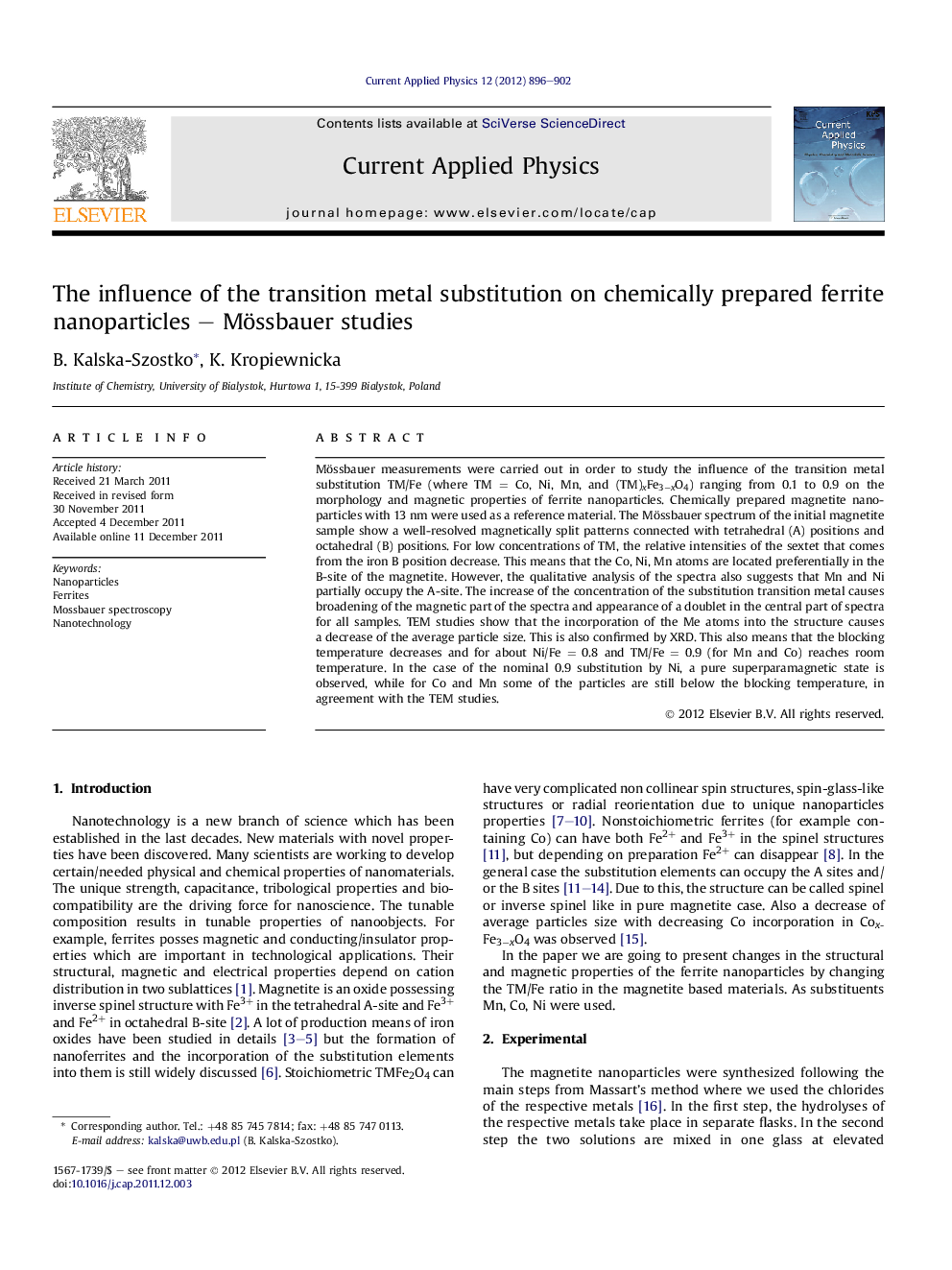| Article ID | Journal | Published Year | Pages | File Type |
|---|---|---|---|---|
| 1786563 | Current Applied Physics | 2012 | 7 Pages |
Mössbauer measurements were carried out in order to study the influence of the transition metal substitution TM/Fe (where TM = Co, Ni, Mn, and (TM)xFe3−xO4) ranging from 0.1 to 0.9 on the morphology and magnetic properties of ferrite nanoparticles. Chemically prepared magnetite nanoparticles with 13 nm were used as a reference material. The Mössbauer spectrum of the initial magnetite sample show a well-resolved magnetically split patterns connected with tetrahedral (A) positions and octahedral (B) positions. For low concentrations of TM, the relative intensities of the sextet that comes from the iron B position decrease. This means that the Co, Ni, Mn atoms are located preferentially in the B-site of the magnetite. However, the qualitative analysis of the spectra also suggests that Mn and Ni partially occupy the A-site. The increase of the concentration of the substitution transition metal causes broadening of the magnetic part of the spectra and appearance of a doublet in the central part of spectra for all samples. TEM studies show that the incorporation of the Me atoms into the structure causes a decrease of the average particle size. This is also confirmed by XRD. This also means that the blocking temperature decreases and for about Ni/Fe = 0.8 and TM/Fe = 0.9 (for Mn and Co) reaches room temperature. In the case of the nominal 0.9 substitution by Ni, a pure superparamagnetic state is observed, while for Co and Mn some of the particles are still below the blocking temperature, in agreement with the TEM studies.
► Ni, Mn and Co were incorporated in ferrite nanoparticles structure. ► Decrease of particles size with increase of substitution element was observed. ► Decreasing of superparamagnetic blocking temperature as a function of substitution element concentration was observed.
